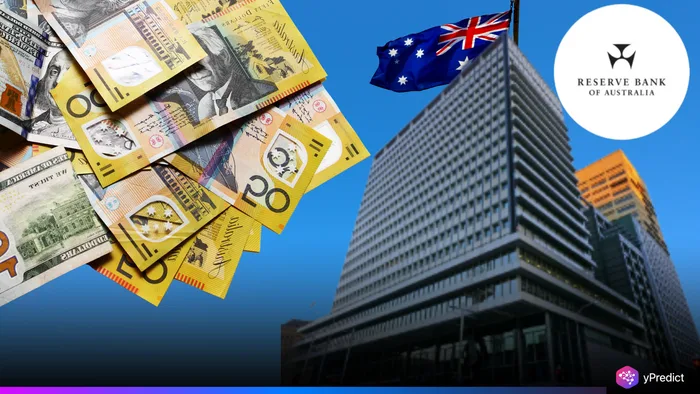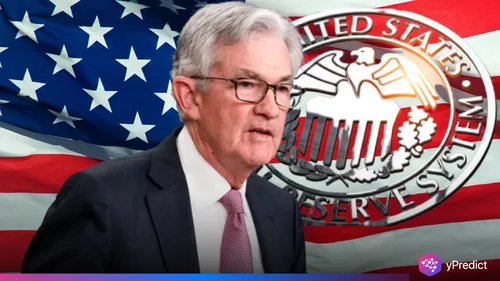
The Reserve Bank of Australia ambushed markets this week by not changing its policy rate when markets had generally expected further easing. The RBA took its interest rate decision on Tuesday to keep the policy rate at 3.85%, which was a decision only five of 32 polled economists expected. The decision surprised the markets as policymakers were weighing evidence of domestic resilience versus rising global uncertainty prompted by the US trade situation with China.
The RBA’s decision prompted an immediate reaction in the markets. The Australian dollar moved to its highest level in more than a month. Traders pulled back on expectations of future rate cuts. The RBA essentially gave markets the green light to buy, signaling that it would be patient but would require more time to assess the data before making further policy adjustments. The RBA pointed to the current trend of inflation and risks from global trade as the main reasons for the decision to pause.
RBA Defies Market Expectations with a Surprise Pause
Only a minority of economists predicted the central bank would hold the line this month. Most analysts expected a third rate cut in the current easing cycle. However, six of nine board members voted to keep rates steady. They cited the need for more time and data to confirm that inflation is moving sustainably towards the 2.5% target.
The RBA interest rate decision sent ripples through bond markets. Yields on three-year government bonds rose as traders reduced their bets on additional cuts. Immediately after the decision, markets priced in a 75% chance of three rate cuts this year, down from a near certainty.
Inflation Trends and Consumer Weakness Shape Policy Outlook
The more recent data revealed that inflation has dropped to the lower end of the RBA’s 2-3% target range. Household spending remains weak and consumer confidence is still low. However, weak productivity may mean labor costs could remain elevated, creating a risk of renewed inflationary pressure.
These competing signals have led the central bank to proceed with caution. One strategist even said the pause was really just a delay on the rate cut until August. The cautious tone, however, does reflect some real concern over the sustainability of consumer spending and labor market resilience.
Global Policy Divergence Adds to the Uncertainty
The global economic uncertainty created by diverging central bank paths is becoming more visible. While the US Federal Reserve has held steady, the European Central Bank and Bank of Canada have eased recently. This policy split complicates forecasts and puts extra pressure on the RBA to make the right call at the right time.
Further complicating matters is the escalating trade policy uncertainty coming from the US. President Donald Trump announced potential tariffs of 25% on imports from Japan and South Korea, with a temporary hold until August. These moves have raised red flags for global supply chains, investment, and inflation paths.
How US Tariffs Affect Australia’s Economy
Though Australia avoided the steepest tariff hikes, it still faces a 10% baseline levy and specific duties on steel and aluminum. Surprisingly, Australia’s Productivity Commission sees a potential silver lining. Their modeling suggests that cheaper imports and capital flows could slightly boost local GDP by 0.37%.
However, this comes with a big warning. Long-term global economic uncertainty could delay business investment and household spending. Firms may hesitate to commit to irreversible projects, especially those involving exports or complex supply chains.
China’s Role and Domestic Implications
A significant amount of risk for Australia is found in the influence of US tariffs on China. Given that China is Australia’s largest trading partner (and therefore any slowdown could be catastrophic), the exports to China accounted for 6.6% of Australia’s GDP in the first quarter of 2024.
The RBA acknowledges this risk and noted that trade uncertainty could be weighing on business and consumer activity. However, it retained the ability to act if international developments began to materiality impact Australia’s economic outlook.
What Comes Next for RBA Policy?
Governor Michele Bullock is speaking later today, and Deputy Governor Andrew Hauser is speaking at a macroeconomic panel on Wednesday; these events may provide further information about the future.
For now, the RBA interest rate decision reflects a delicate balance between supporting domestic conditions and facing an uncertain global environment. Likewise, the strength of the Australian dollar and the lowering of the market’s expectations for rate cuts indicate that traders think more easing is probable, but not guaranteed.







